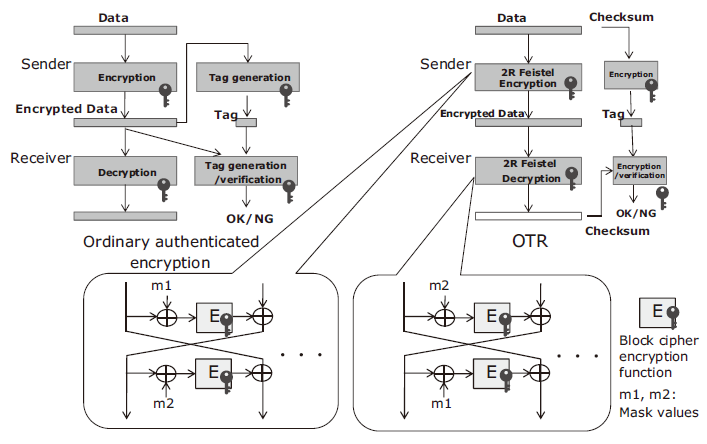In an increasingly interconnected world, the demand for efficient cryptographic solutions has become paramount, particularly for Internet of Things (IoT) devices. As the number of these devices skyrockets, the need to secure communications without compromising performance invites a burgeoning interest in lightweight cryptography algorithms. These algorithms promise a paradigm shift, addressing the quest for both security and efficiency in a domain often marred by complexity.
Lightweight cryptography emerges as a specialized branch of cryptography aimed at constrained environments—like IoT devices, smart sensors, and embedded systems—where traditional cryptographic methods prove too robust and resource-intensive. Fundamental to the allure of lightweight cryptographic algorithms is their ability to deliver adequate protection while requiring minimal processing power, memory, and energy consumption. This is particularly critical, as many IoT devices operate on limited battery life and have restricted computational capabilities.
At its core, lightweight cryptography is not merely about downsizing existing protocols but rethinking fundamental security constructs. The challenge lies in designing algorithms that maintain the core principles of confidentiality, integrity, and authenticity while being agile enough to operate under stringent resource constraints. This balance ideally incites curiosity among technologists and cryptographers alike.
To appreciate the significance of lightweight cryptography, one must scrutinize the context in which it operates. Traditional algorithms such as AES (Advanced Encryption Standard) and RSA (Rivest–Shamir–Adleman) offer robust security but often at the expense of efficiency. Consider AES, a stalwart of modern cryptography; while it is recognized for its rigorous security, it demands considerable computational overhead, making it less suitable for devices like smart home appliances or low-power medical equipment.
The design principles behind lightweight algorithms prioritize simplicity and efficiency. Two primary categories exist: lightweight block ciphers and lightweight public-key cryptography. Block ciphers, such as SPECK and SIMON, feature streamlined architectures that support smaller key sizes while ensuring resilience against various cryptographic attacks. Public-key algorithms, on the other hand, have seen innovations like the Elliptic Curve Cryptography (ECC), which exploits the mathematical properties of elliptic curves to provide security comparable to RSA but with much smaller key lengths. This diminutive footprint is vital in scenarios where bandwidth is limited, and real-time processing is critical.
Security remains the paramount concern. Lightweight cryptography still must withstand a barrage of attacks—both cryptanalytic and implementation-based. Side-channel attacks, for instance, pose a tangible threat as they glean sensitive information from the physical implementation of a cryptographic algorithm rather than its theoretical framework. This necessitates that lightweight designs not only be resource-efficient but also resilient against such attacks. Hence, the development of countermeasures becomes equally important and adds layers of complexity to the algorithms’ design.
The quest for establishing lightweight algorithms does not occur in isolation. A trove of international standards bodies and consortiums, including NIST (National Institute of Standards and Technology) and ISO/IEC, actively engage in consolidating criteria that govern lightweight cryptographic standards. For instance, the NIST Lightweight Cryptography project aims to foster the standardization of lightweight cryptographic algorithms, establishing a framework that garners global acceptance. This collaborative approach is pivotal, promising developers a sense of credibility and assurance that their implementations will meet security and interoperability standards.
The incorporation of such algorithms in real-world applications evokes curiosity about their practical efficacy. A prime example can be found in wireless sensor networks used for environmental monitoring. These networks, often characterized by limited energy sources and bandwidth, rely on lightweight cryptography to facilitate secure communication without draining resources. IoT devices in smart cities, healthcare, and autonomous vehicles similarly benefit from lightweight cryptographic frameworks, as they provide the necessary security without burdening the device’s operational capabilities.
Looking to the future, the landscape of lightweight cryptography reflects a riveting interplay between evolving technological demands and persistent cybersecurity challenges. As quantum computing looms on the horizon, the implications for all forms of encryption are profound. Investigating lightweight post-quantum cryptography reinforces the notion that adaptability and resilience are paramount. The groundwork laid by current lightweight architectures may serve as stepping stones toward future solutions designed to withstand the speculative threats posed by quantum adversaries.
The ongoing discourse surrounding lightweight cryptography also evokes ethical considerations. As the commoditization of sensitive user data continues to escalate, it becomes ethically imperative for developers to leverage lightweight cryptography to protect user privacy without exacerbating device constraints. The promise of safeguarding personal information while promoting efficiency echoes a harmonious balance that aligns technological advancement with ethical imperatives—a discourse that stimulates further exploration among technology professionals.
In conclusion, lightweight cryptography encapsulates a compelling narrative in the realm of modern cryptographic practices. It symbolizes a quest for innovation that transcends traditional methodologies, tailored for an age where efficiency becomes as crucial as security. The confluence of ingenuity and necessity enables lightweight cryptography to stand as a formidable force, promising not only to secure a burgeoning network of IoT devices but to shape the very future of digital communication. Embracing this paradigm shift invites a renewed perspective that is inherently captivating, steering the conversation toward both the complexities and the necessities of contemporary digital security.









Leave a Comment